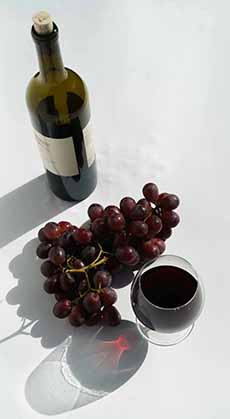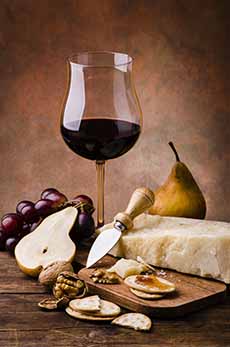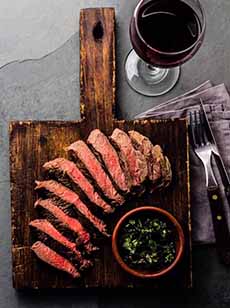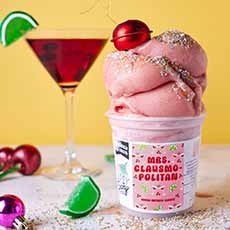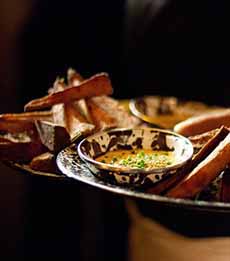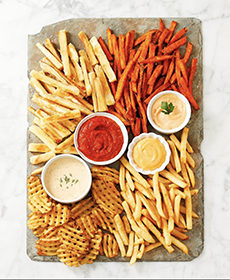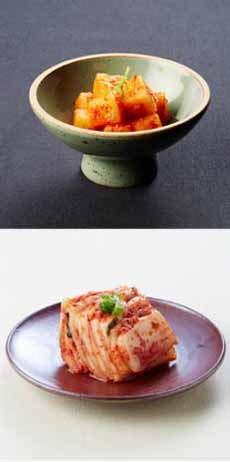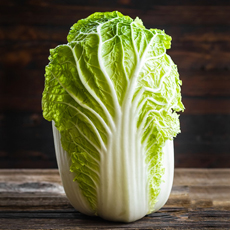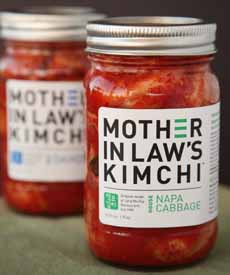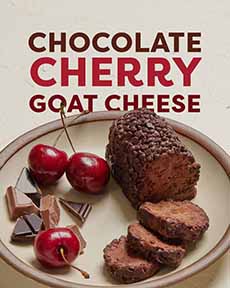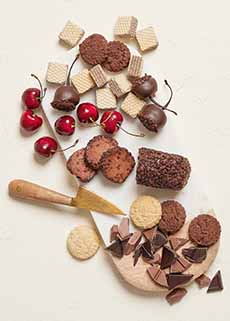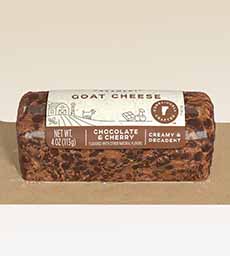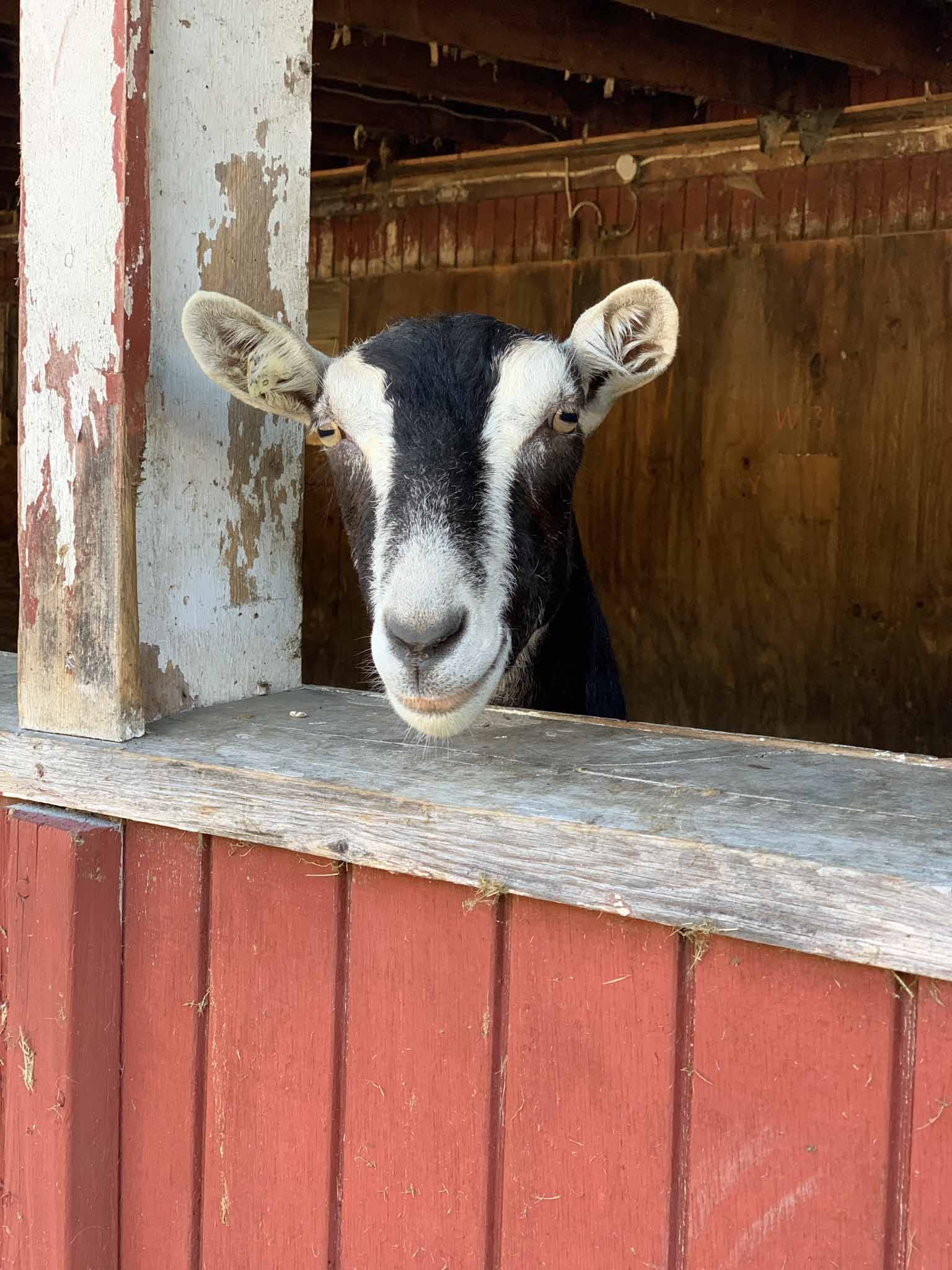|

[1] Leek and goat cheese dressing. The recipe is below (photos #1 and #3 © Vermont Creamery).
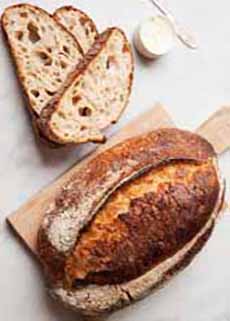
[2] A rustic sourdough loaf (photos #2, #4, and #5 © Good Eggs).

[3] Vermont Creamery’s Unsalted Cultured Butter — 82% Butterfat.
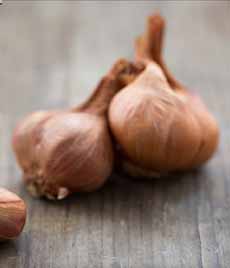
[4] Shallots taste like a cross between red and yellow onions, with a more delicate, sweet flavor.
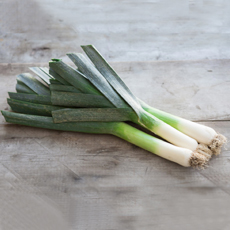
[5] Leeks are members of the Allium family, along with chives, garlic, onions, scallions, and shallots.
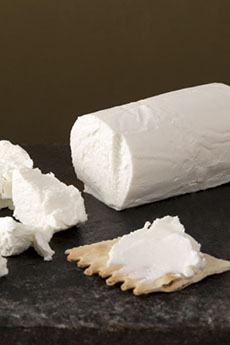
[6] While you only need a four-ounce goat cheese log, the eight-ounce size affords snacking possibilities (photo © Murray’s Cheese).
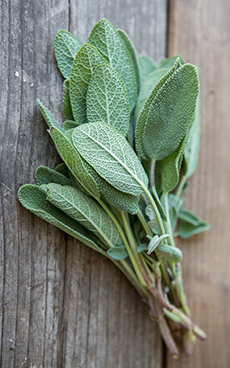
[7] Fresh sage, of course.
|
|
Perhaps our favorite item on the Thanksgiving dinner table is the stuffing. We’re a bread-a-holic to start with, and we simply don’t think to make stuffing at other times of the year.
We’re not talking about the basic Pepperidge Farm stuffing: bread and butter with onions, celery, and herbs. Not that we’d turn it down at someone else’s house; we just wouldn’t make it at ours.
We’re always looking for recipes with a complex layering of flavor: butternut squash, chestnuts, chicken livers, fruit (apples, dried cranberries, grapes, pears, persimmon, raisins), mozzarella perlini, mushrooms, nuts, oysters, nuts, scallops and more have made it into our stuffing—not all at the same time, but three or four choices.
Plus lots of herbs, especially sage. To us, it isn’t stuffing if it isn’t redolent of sage.
Varying the bread is also something we enjoy: cornbread, pumpernickel, rye, turmeric bread, and even bagels!
We match the bread to the ingredients: cornbread with fruits, nuts, and squash; pumpernickel with oysters and scallops; and so on.
The recipe below is a gourmet’s dream: a cross between a savory bread pudding and classic stuffing.
Rich with the flavors of leeks and shallots, toasted bread, herbs, and celery, all complemented by tangy goat cheese.
November 21st is National Stuffing Day!
The recipe is below, but first:
THE DIFFERENCE BETWEEN STUFFING & DRESSING
It’s simple:
Stuffing is cooked inside the bird.
Dressing is cooked in a separate pan.
While the idea of stuffing the bird appeals to many, most experts recommend cooking a separate dressing.
For food safety reasons, stuffing in the cavity of the bird must reach the same 165°F temperature before it is ready to serve.
If you have a vegetarian dressing, it’s not an issue. But if you have a dressing made with raw meat or seafood, make sure it cooks to 165°F.
It’s also a heck of a lot easier to make dressing, both in placing it in a pan instead of spooning it into the turkey cavity; and in avoiding the labor of scooping the stuffing out of the bird.
While we grew up in a family that made stuffing—and we loved watching Mom put it into the bird and scoop it out—as soon as we learned about the dressing alternative, we changed our perspective.
RECIPE: LEEK & GOAT CHEESE STUFFING
To us, this is “gourmet” dressing—food for foodies.
The recipe is from Vermont Creamery, which used its goat cheese and 82% butterfat butter (a revelation). divided Vermont Creamery Unsalted Cultured Butter – 82% Butterfat
We happened to have a duck and Armagnac sausage from D’Artagnan. What to do?
We made a double batch of the stuffing and added a small dice of the sausage to one pan. We liked it!
As a note: To feed a larger group, double the recipe and bake it in a 13×9-inch baking pan.
Prep time is 30 minutes, and cook time is 45 minutes.
Ingredients For 6 Servings
12 ounces bread (preferably rustic), thick crusts removed*, torn into 1-inch pieces
2 medium leeks, sliced 1/2 inch thick
¼ cup butter, divided
1 large rib celery, diced
1 medium shallot, thinly sliced
2 medium cloves garlic, thinly sliced
¼ teaspoon fine sea salt
¼ cup dry white or rosé wine
¼ cup parsley leaves, plus more for garnish
1 tablespoon fresh sage leaves
½ tablespoon fresh thyme leaves
Coarse ground pepper, as desired
1¾ cups vegetable broth or bouillon dissolved in boiling water, cooled to room temperature
1 large egg
4 ounces goat cheese log crumbled into large pieces
Preparation
1. POSITION the rack in the upper third of the oven. Preheat the oven to 350ºF.
2. LIGHTLY BUTTER a 9-inch round baking dish or equivalent. Set aside.
3. PLACE the bread onto a rimmed baking sheet; toast for 20-40 minutes or until dry and lightly golden. (Baking time depends on the type of bread used. Soft white bread toasts more quickly than heartier breads.)
4. PLACE the leeks in a large bowl; cover with cool water. Separate the leek slices to rinse off any sand; let stand for 5 minutes, swirling a few times. Any sand should sink to the bottom of the bowl.
5. MELT 3 tablespoons butter in a wide skillet over medium heat. When the butter is hot, lift the leeks from the bowl, shaking off the excess water. Add them to the skillet.
6. ADD the celery, shallot, garlic, and salt. Cook, stirring frequently, for 5-10 minutes or until tender. Add the wine and continue cooking for 2-4 minutes or until evaporated.
7. PLACE the toasted bread pieces in a large bowl; add the leek mixture, parsley, sage, thyme, and pepper.
8. ADD the egg to the broth and whisk to combine. Pour over the bread mixture and toss well to combine. Let the mixture stand for 5 minutes to absorb a bit of moisture, tossing a few times.
9. SCOOP half of the bread mixture into the prepared baking dish; top with half of the crumbled goat cheese. Top with the remaining bread mixture, then sprinkle with the remaining goat cheese. Dot with the remaining 1 tablespoon of butter cut into small pieces.
10. BAKE for 40-50 minutes or until the top of the stuffing is golden and crisp and the center is hot. Sprinkle with additional parsley, if desired. Serve warm.
MORE DRESSING OR STUFFING RECIPES
All of these delicious recipes are “not just for Thanksgiving.”
Chestnut, Fig & Honey Dressing Or Stuffing
Chicken Liver Or Turkey Liver Dressing Or Stuffing
Irresistible Stuffing Muffins
Stuffing Omelet With Leftover Stuffing
Oyster Dressing Or Stuffing
Shiitake Mushroom Dressing or Stuffing
Panettone Dressing Or Stuffing
__________________
*Save the crusts! We had them for lunch with a bowl of soup, and toasted them the next day to spoon up Greek yogurt.
|
